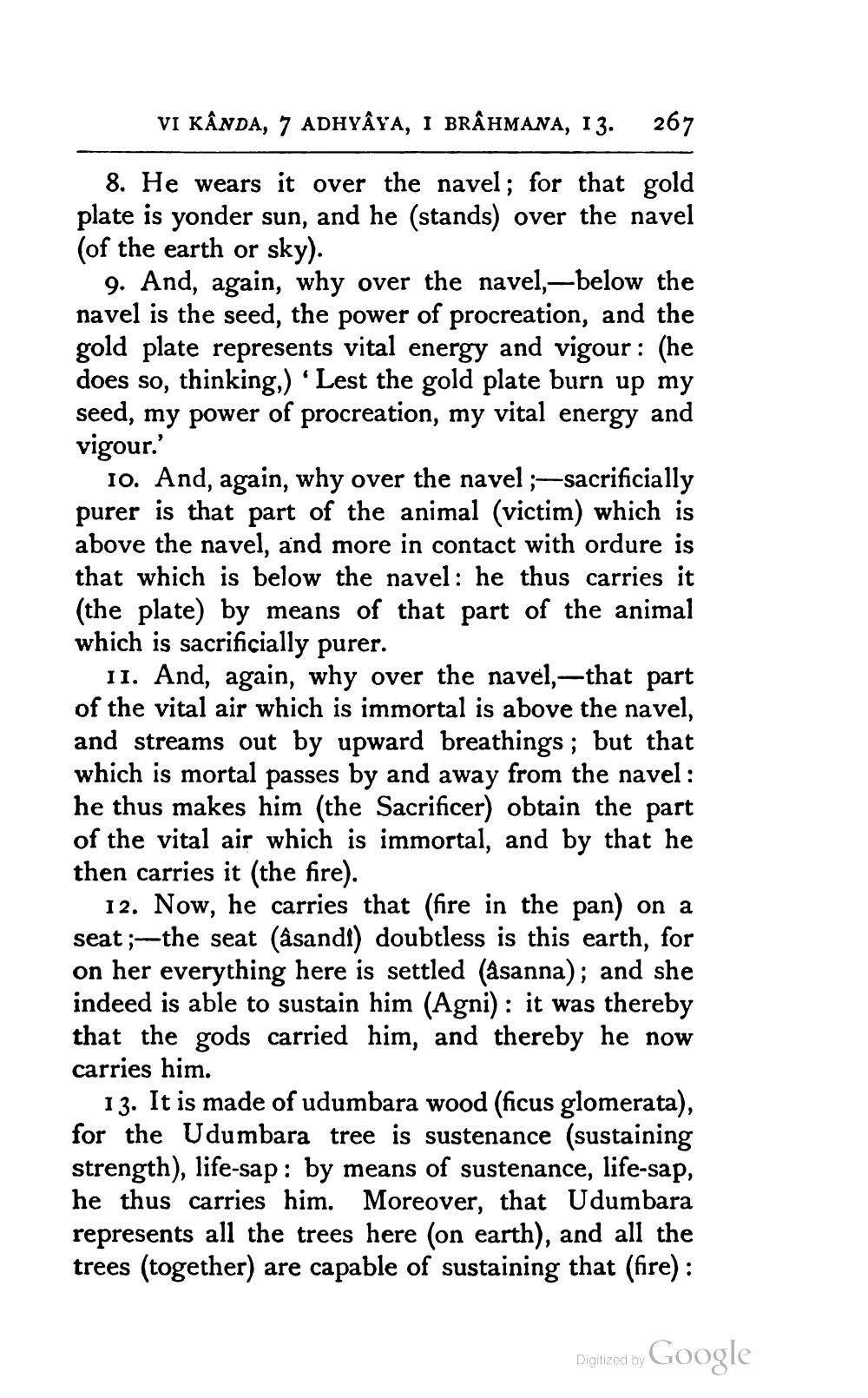________________
VI KÂNDA, 7 ADHYÂYA, I BRÂHMANA, 13.
267
8. He wears it over the navel; for that gold plate is yonder sun, and he (stands) over the navel (of the earth or sky).
9. And, again, why over the navel,- below the navel is the seed, the power of procreation, and the gold plate represents vital energy and vigour: (he does so, thinking,) ' Lest the gold plate burn up my seed, my power of procreation, my vital energy and vigour.'
10. And, again, why over the navel ;-sacrificially purer is that part of the animal (victim) which is above the navel, and more in contact with ordure is that which is below the navel: he thus carries it (the plate) by means of that part of the animal which is sacrificially purer.
11. And, again, why over the navel, -that part of the vital air which is immortal is above the navel, and streams out by upward breathings; but that which is mortal passes by and away from the navel : he thus makes him (the Sacrificer) obtain the part of the vital air which is immortal, and by that he then carries it (the fire).
12. Now, he carries that (fire in the pan) on a seat;-the seat (asandi) doubtless is this earth, for on her everything here is settled (asanna); and she indeed is able to sustain him (Agni): it was thereby that the gods carried him, and thereby he now carries him.
13. It is made of udumbara wood (ficus glomerata), for the Udumbara tree is sustenance (sustaining strength), life-sap: by means of sustenance, life-sap, he thus carries him. Moreover, that Udumbara represents all the trees here (on earth), and all the trees (together) are capable of sustaining that (fire) :
Digitized by Google




